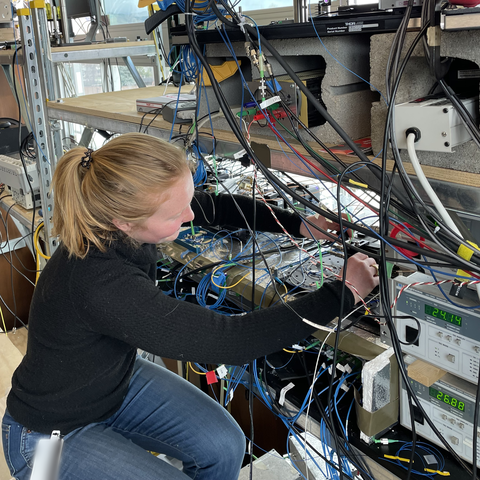
Networks linking atomic clocks on satellites with those on Earth promise an exciting new frontier for science, including in the search for mysterious dark matter. NIST’s PEACOCS (Photon Efficient Agile Comb Optical Clock Synchronization) system may offer a way to build these networks.
The system is based on a Nobel Prize-winning technology called the frequency comb, an exact ruler that separates the different colors (or frequencies) within light. Frequency combs have many different uses, including timekeeping, and PEACOCS is a low-power version of NIST’s laser frequency-comb-based system for sending two-way time signals over the air.
PEACOCS requires just picowatts of received power, one-thousandth less than what previous systems used. The key is having two combs on either end of the signal’s path, reducing the number of light particles (photons) in each signal pulse to nearly zero. Previous systems used a single comb at each site, linked to an atomic clock or other reference device. That setup required lots of photons.
Why does the number of photons matter? If you need lots of photons to get a result, and you inevitably lose some along the way, the transmission will be broken. But if you don’t need as many, you can still go the full distance.
By that logic, the PEACOCS system of fewer photons could send time signals across much longer distances, perhaps hundreds of kilometers, even from moving platforms such as orbiting satellites.
Researchers tested PEACOCS over a 2-kilometer outdoor range at NIST’s campus in Boulder, Colorado. Initial results indicate the system can provide high performance even in turbulent air, and further testing is underway. Stay tuned!
Follow us on social media for more like this from all across NIST!

